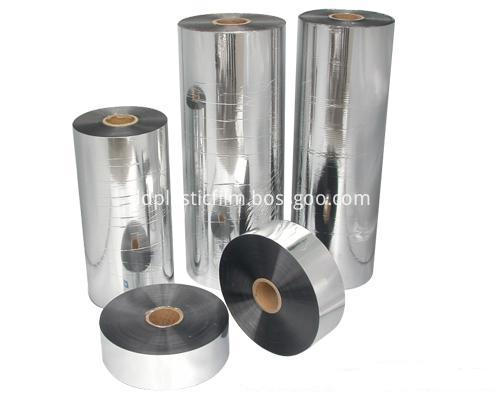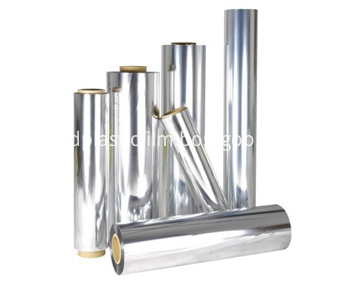Rat poly ADP ribose polymerase (PARP) enzyme-linked immunoassay (ELISA)
Rat poly ADP ribose polymerase (PARP) enzyme-linked immunoassay (ELISA) kit instructions for use This kit is for research use only.
Mainly products :VmBOPP, Vmpet, Vmcpp , Vmpe , Emergency Blanket, colorful metallized film
Normal size: 12mic, 15mic, 20mic, 50mic, 80mic,100mic 188mic ect
Widht: 50mm-2000mm
MOQ:500KG
Delivery time: 7-10days
Application: 1. printing , 2.packaging 3.lamination
Universal Metallized Film Bopp Metallized Film,Color Metallized Film,Emergency Blanket Film,Universal Metallized Film Shijiazhuang dadao Packaging materials Co , https://www.ddplasticfilm.com
Drug Name:
Generic name: Rat poly ADP ribose polymerase (PARP) enzyme-linked immunoassay kit Purpose of use:
This kit is used to determine the content of poly ADP ribose polymerase (PARP) in rat serum, plasma and related liquid samples.
Experimental principle The kit uses the double antibody sandwich method to determine the level of rat poly ADP ribose polymerase (PARP) in the specimen. Microporous plates were coated with purified rat poly ADP ribose polymerase (PARP) antibody to make solid-phase antibodies. Poly ADP ribose polymerase (PARP) was added to the microwells coated with mAb in turn, followed by The labeled poly ADP ribose polymerase (PARP) antibody binds to form an antibody-antigen-enzyme-labeled antibody complex. After thorough washing, the substrate TMB is added for color development. TMB is converted into blue under the catalysis of HRP enzyme, and into the final yellow under the action of acid. The color depth is positively correlated with poly ADP ribose polymerase (PARP) in the sample. The absorbance (OD value) was measured with a microplate reader at a wavelength of 450 nm, and the concentration of human rat poly ADP ribose polymerase (PARP) in the sample was calculated by a standard curve.
Kit composition
1 20 times concentrated washing solution 30ml × 1 bottle 7 stop solution 6ml × 1 bottle
2 Enzyme label reagent 6ml × 1 bottle 8 standard (900μmol / L) 0.5ml × 1 bottle
3 Enzyme label coated plate 12 wells × 8 strips 9 standard dilutions 1.5ml × 1 bottle
4 Sample diluent 6ml × 1 bottle 10 instructions 1 copy
5 Developer A solution 6ml × 1 bottle 11 2 sealing film
6 Developer B solution 6ml × 1 / bottle 12 sealed bag 1 specimen requirement
1. Specimens are extracted as soon as possible after collection, and extraction is performed according to relevant literature, and experiments should be conducted as soon as possible after extraction. If the test cannot be performed immediately, the specimen can be stored at -20 ℃, but repeated freezing and thawing should be avoided
2. The samples containing NaN3 cannot be detected because NaN3 inhibits horseradish peroxidase (HRP) activity.
Steps
1. Dilution and loading of standard products: set 10 standard wells on the enzyme-coated plate, add 100 μl of the standard products in the first and second wells, and then add the standard products in the first and second wells. 50μl of diluent, mix well; then take 100μl from the first well and the second well and add them to the third and fourth wells respectively, and then add 50μl of standard dilution solution to the third and fourth wells respectively, mix well Then take 50μl each in the third and fourth wells and discard it, then add 50μl each to the fifth and sixth wells, and then add 50ul of the standard dilution solution to the fifth and sixth wells respectively, and mix well; After mixing, take 50μl from the fifth and sixth wells and add them to the seventh and eighth wells respectively. Then add 50μl of standard dilution solution to the seventh and eighth wells respectively. Take 50μl from the eight wells and add them to the ninth and tenth wells. Then add 50μl of the standard dilution solution to the ninth and tenth wells respectively. After mixing, take 50μl from the ninth and tenth wells and discard. (After dilution, the amount of sample added to each well is 50 μl, and the concentrations are 600 μmol / L, 400 μmol / L, 20 μmol / L, 100 μmol / L, and 50 μmol / L respectively).
2. Add samples: set up blank wells (the blank control wells do not add samples and enzyme reagents, the rest of the steps are the same) and the sample wells to be tested. Add 40μl of sample diluent to the test sample well of the enzyme-coated plate, and then add 10μl of the sample to be tested (the final dilution of the sample is 5 times). Add the sample and add the sample to the bottom of the well of the microplate, try not to touch the wall of the well, shake gently to mix.
3. Incubation: seal the plate with the sealing film and incubate at 37 ° C for 30 minutes.
4. Mixing solution: dilute 20 times concentrated washing liquid with distilled water 20 times and reserve
5. Washing: Carefully peel off the sealing film, discard the liquid, spin dry, fill each well with the washing solution, let it stand for 30 seconds and discard, repeat 5 times and pat dry.
6. Add enzyme: add 50μl of enzyme label reagent to each well, except blank well.
7. Incubation: The operation is the same as 3.
8. Washing: The operation is the same as 5.
9. Color development: Add 50μl of developer A to each well, and then add 50μl of developer B, mix gently, and develop for 15 minutes in the dark at 37 ℃.
10. Termination: Add 50μl of stop solution to each well to stop the reaction (at this time the blue will turn to yellow).
11. Determination: Measure the absorbance (OD value) of each well in sequence with the blank air conditioner at zero and 450 nm wavelength. The measurement should be carried out within 15 minutes after adding the stop solution.
Calculate the concentration of the standard as the abscissa, and the OD value as the ordinate. Draw a standard curve on the coordinate paper, and find the corresponding concentration from the standard curve according to the OD value of the sample; multiply by the dilution factor; The linear regression equation of the standard curve is calculated from the concentration and the OD value, the OD value of the sample is substituted into the equation, the sample concentration is calculated, and then multiplied by the dilution factor, which is the actual concentration of the sample.
Precautions
1. The kit should be taken out of the refrigerated environment and equilibrated at room temperature for 15-30 minutes before use. If the enzyme-coated plate is unsealed after opening, the strip should be stored in a sealed bag.
2. Crystals may be precipitated in the concentrated washing liquid, which can be heated and dissolved in a water bath during dilution, and the results will not be affected during washing.
3. The sampler should be used at each step of sample addition, and the accuracy should be regularly checked to avoid test errors. It is best to control the sampling time within 5 minutes. If there are many specimens, it is recommended to use a volley gun to add samples.
4. Please make a standard curve at the same time of each measurement, it is best to make a double hole. If the content of the substance to be tested in the specimen is too high (the OD value of the sample is greater than the OD value of the first well of the standard well), please dilute it with a certain multiple (n times) of the sample diluent and then determine it. Multiple (× n × 5).
5. The sealing film is limited to one-time use to avoid cross-contamination.
6. Please keep the substrate away from light.
7. Strictly follow the instructions, and the test results must be determined by the microplate reader.
8. All samples, washing liquids and various wastes should be treated as infectious agents.
9. The components of different batches of this reagent shall not be mixed.
10. If there is any difference with the English manual, the English manual shall prevail.
examination range:
20μmol / L -800μmol / L
specification:
96 servings / box storage conditions and expiration date
1. Kit storage :; 2-8 ℃.
2. Validity: 6 months 
